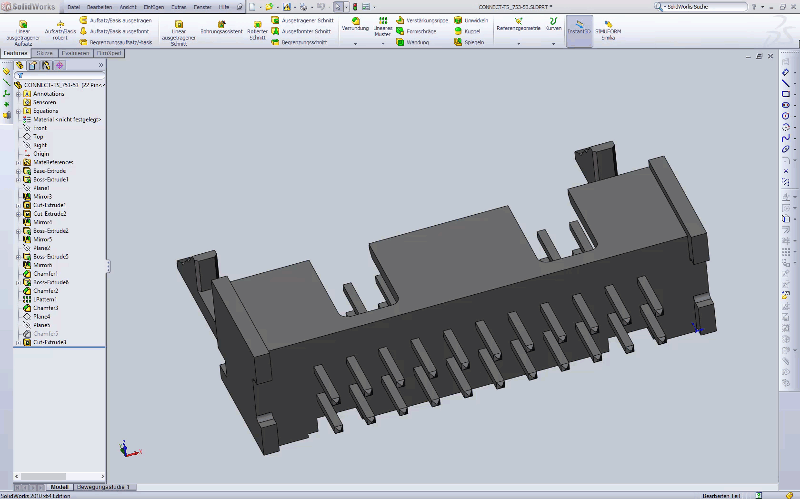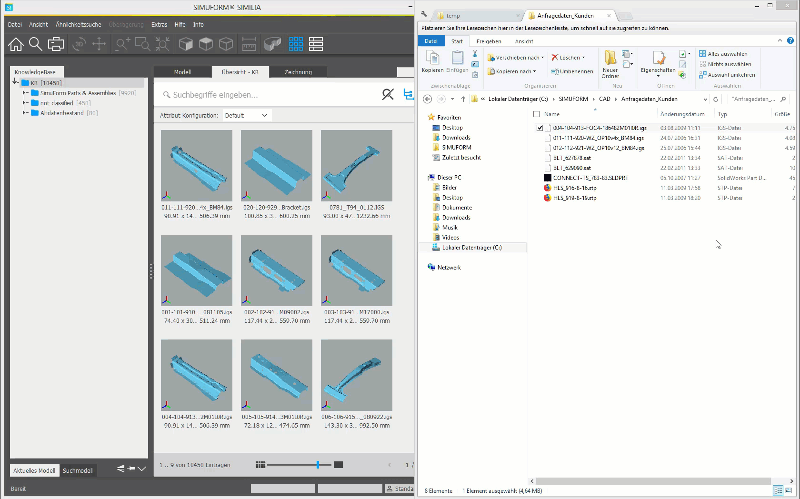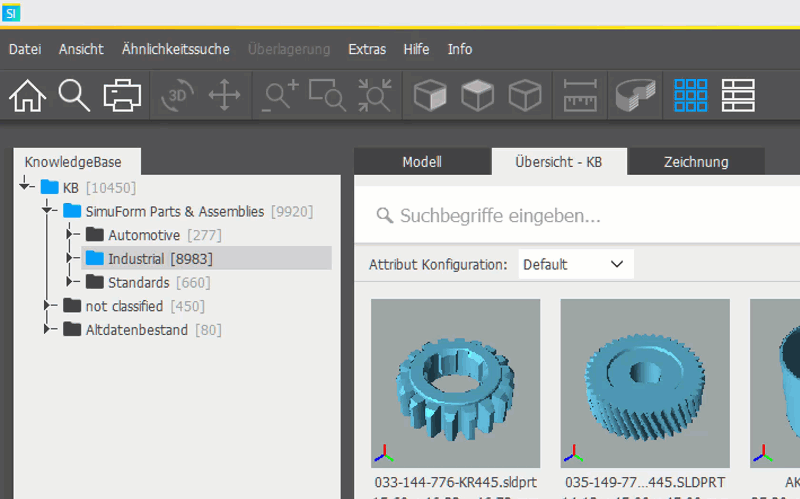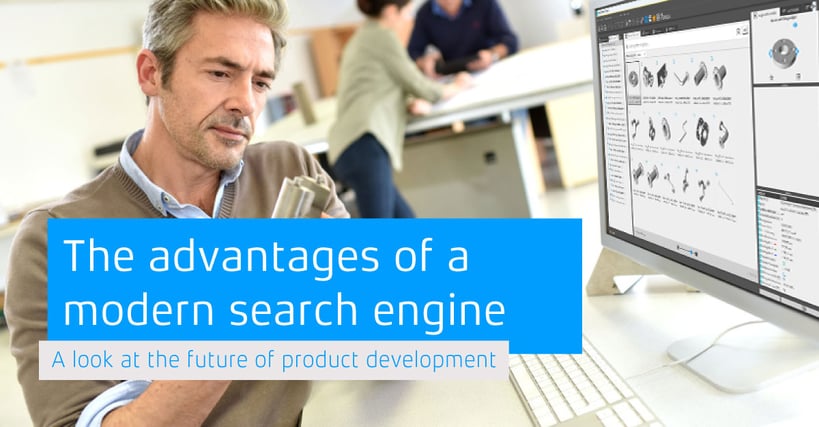What are you constructing today? Why not implement your ingenious ideas more easily and quickly?
It will work for you, too, guaranteed.
Product development (PEP) today is an interdisciplinary, networked, and very demanding process. It is crucial to have a holistic view of this process and to have the right information available and usable at the right time. Read how you can implement your ideas in product development more efficiently, avoid redundancies and minimize friction losses. Simple - fast - efficient.
Unleash the genius
High functional requirements, high product quality, and shortened lead times for entire machines and systems often pose major challenges for design and development. Today's customers have high - sometimes perhaps exaggerated - demands. But that's the way it is. In the competitive environment, a company wants to stand out from the rest and offer added value. So you inevitably end up in an intensified competitive situation. Then you have to be able to rely absolutely on the rest. You can't have any open flanks here.
It then becomes all the more important to deal with the essential process of value creation. The focus should be on the core of development and less on the periphery, the fuss - around it, so to speak. For the development of the periphery, parts and data should be easy to reuse without having to deal with them in great detail. This can give you a clear competitive advantage, in that you are less concerned with standardized processes, but rather bring your genius to the fore. Made in Germany is the main priority.
Use data and information simply and efficiently. How does it work?
In this situation, the thought "how do I quickly find matching data, parts, assemblies, and information" plays a key role. Do you still believe that you need a clean material characteristics list (SML), classification, or a uniform naming catalog for this? Far from it. Because that is a thing of the past. In the age of digitalization and Industry 4.0, this is akin to still working with milling templates and cam-controlled machines. Interestingly, this quickly makes sense to most people. But a replacement for the tedious and annoying classification one does not want to recognize? Perhaps this is because we machinists have less to do with bits-and-bytes. Fits and the handling of a micrometer are better for us. The fact is, however, that a uniformly structured form of data is not absolutely necessary for finding data today. Sure, you can spend a lot of time carefully naming and pigeonholing your data. To a certain extent, this may also make sense. But whether that is flexible and competitive remains an open question. So let's look at how you can quickly reuse your data with almost no effort, without struggling. After all, no one needs another management tool.
Your advantages with a modern 3D search engine like SIMILIA:
- No classification is required.
- No need to maintain a uniform naming catalog.
- No unnecessary administrative work.
- No search times but still everything is on call.
- No double work and no multiple developments.
- No language-specific dependencies.
- ...
How it works from any CAD
It really doesn't matter what CAD system(s) you use. This one always works. You are currently in the design process. Either you have already loaded an example sample part into your CAD system to use as the basis for a new variant, or you are in the process of creating something new. In this very situation, you are probably asking yourself: Do I have to create this all over again? Don't we already have that in our inventory?
With more than 150,000 drawing articles in stock, the probability of finding something suitable is not exactly small. But where? In the second step, you catch yourself saying to yourself, "Before I find this part in a similar configuration, I'll have drawn it ten times." So you redo it again, starting with Adam and Eve. STOP. There is another way because there is an easy entry point to finding matching drawing parts without struggling.

So you start on the basis of a sample part that you may have. Take this as a basis and check directly from your CAD system what else you have in your inventory. It doesn't matter how the parts are located in space, how they are named, and whether the master data is maintained or not. It doesn't matter at all, because you are able to find the right part immediately from all the data in your inventory. You can also sharpen your search, either by the existing attributes or by the sharpness of the geometric similarity.
However, you may not currently have a sample. You simply start in your CAD system and want to check what is still available in the stock. Here, however, the dimensional reference is important to you. What is the use of a similar bolt or holder that is significantly larger? Here the found component should not only be similar - that is a broad term - but also fit. Then simply limit your found parts according to the dimension reference. These parts do not have to be classified or structured beforehand. The dimension reference is automatically calculated and made available for the search. This way you will not only find a bolt but one that fits. You can also quickly check the dimension.

This is how it works with external data
However, these are not the only possibilities to search for and find suitable components or assemblies in the inventory. That would be very limited. Imagine you have received a model as a STEP or JT from your colleague in the USA or from China, or you have a design for a customer inquiry. When you see the part or assembly, you think, "I had something like that on the table from another colleague the other day. Where was that?" You ponder and after some time you give up. No. Reconciliation with your entire data set is so easy. Simply drag and drop the STEP file from your file explorer or from your e-mail attachment into the SIMILIA interface. Done. Visualize - Compare - Find. In one step. I wonder how this fingerprinting works... (If you are interested in how geometric similarity search works with SIMILIA, read on here). After all, you want to achieve one thing: to reach your goal faster and more reliably, and to have access to valid and comparable parts in your inventory. It can be as simple as that.

Here's how it works with inventory data. Amazingly simple to get started.
You are sitting in an appointment with an important customer. You want to explain to him that you have already done something like this. It's not really a problem. As is often the case, it is difficult to find something convincing. It shouldn't be artificial either. Be amazed at how quickly you can do a full-text search of your entire inventory for everything, and then find all the similar parts based on a reference. It's simple, fast to reliable. At the same time, everything really means everything. All attributes from PDM, ERP, and even from your office documents. SIMILIA offers the possibility with its new product KIS (Knowledge Integration Service) to make even the entire content of Office documents searchable. And that's not all. The content of these documents can be automatically tagged and displayed in structured tables.

And on this occasion, you are even absolutely flexible. Find the data, parts, or assemblies you want. Visualize the data without having access to a CAD system and pick up dimensions. You can do everything that is important to you right now when talking to your customer. Everything works extremely fast and easily.
Do you want to learn more?
...and if you want to know how it works, download our free brochure:





